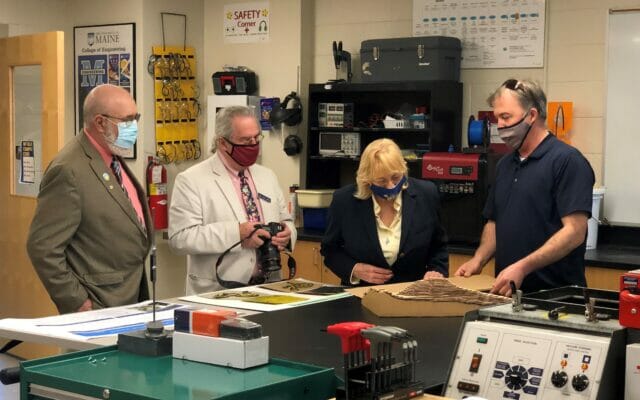Maine CTE and Workforce Training Investment
The funds would cover workforce training program tuition and fees for an estimated 8,500 additional students statewide.
“This is all about workforce needs in Maine and preventing the brain drain we always complain about,” Mills said. “Stay here in Maine, come to Maine and get skilled up.”
Betsy Libby, CMCC interim president, said the additional training opportunities “would be a game-changer for all of our students.”
“We’ve learned so much during the pandemic about what our students need to meet these challenging circumstances, but we’ve also learned what we are capable of,” she said. “We can quickly add workforce training programs to meet a surge in demand to given industries … Learning never stops, preparing our students for the workforce never stops.”
She pointed to a 12-week precision machine training academy as one example. Students study at the college while also working with partner businesses like Grover Precision in Oxford and ABB in Auburn, earning an income.
“While more traditional manufacturing jobs have decreased in recent years, precision manufacturing is in high demand,” Mills said. “Last summer, two precision manufacturing companies in Maine made critical components for the Abbott Labs’ COVID-19 testing machine. Those machines, those testing apparatuses, went around the country and around the world to help us fight back the spread of the pandemic.”
The workforce training funds have some industry targets — 3,800 additional health care workers, 1,400 additional green economy workers, 500 each in hospitality and early childhood teachers — but aren’t targeted to specific Maine community colleges, System President Dave Daigler said.
Programs would be pulled together as training needs are identified, where needed and working with industry, he said.
They could last from weeks to months.
“It’s a very different model,” Daigler said. “It’s a model we really started to build out prior to the pandemic. We envision it as a new entry ramp for a student to get a degree. It starts with, let’s get the skills that person needs to get the job the business needs, get them going and then come back and talk to them again about skill development, and we’re now building up that platform.”
The seven community colleges serve more than 29,000 students a year, roughly 3,000 of them at CMCC.
Mills’ Maine Jobs & Recovery Plan, unveiled earlier this month, uses $1.13 billion in aid coming to the state under the federal American Rescue Plan Act.
Mills said she looked forward to working with the Legislature to implement the plan swiftly.
“This is our chance to make a long-overdue investment in the community college system, attract and grow talent,” she said. “I’m very excited about this.”

